I’m not the smartest fellow in the world, but I can sure pick smart colleagues. – Franklin Roosevelt, American President [1936-1945]
The value of teamwork at the workplace cannot be understated. Teams are crucial for business sustainability. Whether it is in driving revenue or boosting profits, or in building a work culture that thrives on collaboration, teamwork is integral to effective functioning.
This is even more relevant now. With the rise of remote working and several functions going online, complexity of work increasing, diversity & inclusion becoming mainstream, high-end technological innovations disrupting processes, all eyes are on how leaders maneuver their teams to deliver best results.
Stats crunching
According to Teamwork Statistics 2022, published in an article by Team Stage, a provider of cloud-based project management software, the efficacy of teamwork depends on how the team is managed.
- Close to 40% of employees attach high importance to teamwork.
- Recognition of quality work/contribution and achievements of workgroups boosts profits by more than 25%.
- Online collaboration tools have a strong bearing on productivity, scaling it up by 30%. Over 80% of employees have a positive view of peer collaboration apps.
- Effective communication has a key influence on talent retention, increasing it by over 4 times.
Despite the significance, not all organizations get teamwork right.
Why?
Because, although teamwork is much-touted, it is built on wrong premises. These could range from leadership issues to team composition, goal setting, lack of team performance metrics standardization, member compatibility, size, and wrong assumptions.
Whatever the reason, when teamwork fails, the impact is disastrous.
- The work culture takes the first blow. Camaraderie is replaced by hostility; factions mushroom.
- Accountability suffers. With no ownership at the team level, each member is left to fend for themself. Focus narrows from broad-based responsibility to ticking off tasks on individual check-lists.
- Morale takes a beating. Members are left adrift in facing challenges. They scavenge resources or support individually to scrape through.
- Creativity and innovation are sucked into the black hole created by the collapse of collaboration.
- With focus reduced to completing tasks somehow, shared vision is lost.
- This leaves an indelible impact on productivity, efficiency and ultimately, bottom line.
- Employee engagement, development, and talent retention are lost causes.
Retracing the footsteps: What leaders need to look out for
For teamwork to be effective, coordinated effort is the key. The responsibility to get it right rests with the CEO or leader – simply because teamwork reverberates through the organization. To make a positive resounding impact and set the right precedent, leadership needs to factor in the following when building a team for any project:
Choice speaks – pick well: This will decide the result.
Manning a team with the right people is perhaps the most important first step once a project lands on you.
Teamwork is about working together. Will just filling it with top performers serve the purpose? What if they don’t work well in teams? How will you choose then? What’s going to be your benchmark for assessment?
Study well. Do the due diligence into their credentials before taking onboard. Their expertise, experience, skill sets (both soft and hard skills), approach to work, work habits—all aspects need to be weighed in.
Desist from keeping only A-level players. Consider choosing from B-level, too. Decide on the strength of your team. Research shows that for internal work projects, the ideal count of team members is 4 to 5. Anything bigger could be a crowd, leading to chaos.
Clarity will help you choose the deserving people for the project.
It gets trickier if you are building a leadership team. Knowing the backgrounds is important to understand individual traits. Egos may clash. Conflicts could arise, especially when experts in their respective domains come together.
Some other aspects you should consider are their propensity to learn, drive to scale up and move outside their comfort zone, and take initiative.
Compatibility assessment is important to understand individual dispositions and how team dynamics will play out. You could also undertake executive assessments or other leadership potential or collaboration-specific assessments to gauge where they stand currently.
It will also help you strike the right balance between diverse requirements, whether you are manning for a project, or building a team of leaders.
Another aspect you could consider is bringing in diversity to the extent possible. This will lead to inclusion. Importantly, you can use the approach to send out a message on the broader ideals of the organization to the entire company.
The game of chess is on: Every move has to have a purpose.
It is highly erroneous to assume that, without defining goals, the team will know these automatically. By goals, it could mean explaining the aim of the assignment for which the team has been formed, aligning it with the mission/vision of the company, setting timelines, stating clearly the role of the team in achieving the goal.
Once the groundwork is done, the team will not disintegrate along myopic vision. However entangled it may get in the daily work-related issues, it will not lose sight of the broader objectives. The clarity of purpose will avoid conflicting interests.
For instance, if at the organizational level, you are looking to build a team of senior leaders, defining the mission or vision statement is a must. Take a consultative approach to first determine what the core values will be. Based on the aim or purpose of the organization, you can define the mission and vision statements.
Once every component of the team is clear about the purpose and the specific business goals, it will speed up decision-making and avoid incompatibility.
In setting direction, setting the right example is as important.
A good example has twice the value of good advice, saidAlbert Schweitzer, the Alsatian polymath.
Set an example; rules will follow.
Be watchful of your habits, the language you use when challenges arise, how you facilitate dialogues, and handle pressure. This will percolate from your peers to other levels across the organization.
Now, when your peer leaders need to work along teams or form teams, they will know where to start.
Rudderless ships do not reach shores: The next step is to set direction. Strategize. Ideate how you will proceed.
This will include the allocation of responsibilities and setting guidelines.
Here again, there are two models to follow. This will depend on the work.
For individual projects, where roles and responsibilities need to be defined clearly to avoid confusion or overlap, it is prudent to have specific jobs for individuals. So, if it is a research assignment for a client, this approach will help in tracking individual performance and overall progress of work.
But if it is the management team or leadership team, to achieve the business goals, a more collaborative approach is required. Leaders may need to change tack. Some responsibilities will need to be shared, especially since businesses operate in an external environment. Collaboration will then call for agility.
Depending on the requirement, therefore, you can determine the processes to be followed, the strategy to adopt, the structures to place, the routine tasks, etc.
What ties commitment to results? Accountability.
Instill it in the team. This is not a onetime job.
Create a work culture around accountability. It will eventually reflect in teamwork.
Let us take the case of a leadership team. It will have leaders of separate divisions and practices. It is but natural for them to be more focused on the short- or long-term goals of their respective functions.
However, as part of leadership, they need to focus equally on shared responsibilities. How do you get them to do that?
Aligning thinking along common strategic needs through conversations, frequent interactions and discussions is one way. Another is to add measurability to cross-functional responsibility.
This will bring accountability. Once that happens, discussions will automatically veer towards what value can be added to shared responsibilities. It will go beyond individual agendas.
As this picks up, it will gradually reflect across the organization in multiple projects. People manned on more than one project simultaneously will know how to balance and divide their attention.
Work at it, it will work back. Communication – One of the most underrated tools, dismissed and assumed.
Teamwork is effective when teams communicate. A leader should encourage debate and exchange of information, opinions, and ideas. Conclusions and agreements based on intense deliberation are sound.
A leader should strive to strike the right balance where everyone is heard and gets to express their opinions. Diverse perspectives must be factored in for a broad-based consensus, but not all effort should be lost on deliberation alone. Set the timeline for discussion, followed by implementation. Teem meetings, when used prudently, are highly effective platforms. A leader should encourage members to raise issues and challenge each other healthily. These are forums to ask for help in solving problems, to deliberate on setting direction, sharing and utilization of resources, and to draw out contribution from all participants.
As a CEO or leader, when you are conducting meetings, ensure focus on the agenda is not lost. The conversations should stay on track and not descend into chaos.
Suppose your management team needs to take a decision on restructuring a division. Thorough due diligence and exchange of opinions will set the direction for the change. Assenting and dissenting opinions need to be communicated. Different perspectives on the why and how of it, whom will it affect, what will be the impact and, equally important, how to communicate this to the broader organization must be heard. This will enable people to work as a team.
Then chalk out the plan of action to implement it.
Decide how you will communicate the decision outside the boardroom. You need to align it with the company’s broader objectives to convince the larger team outside; ideate on the questions you’d need to field; the concerns that could arise. All stakeholders in communication should be on the same page. This will send out a uniform and consistent message.
By doing this, you also provide a role model for all other projects, internal or external. Irrespective of the size of the team, the members will get the significance of communicating effectively across each stage of the project. This is important to address challenges, iron out the differences, and facilitate smooth implementation.
But communication is a two-way process. Ask and receive feedback, whatever the nature of the project. If it is a small internal project, feedback could be taken from participants and seniors alike.
For something with company-wide implications, the leadership could either solicit opinions before initiating the project. However, it has to be discreet and involve only those whose opinions matter at that point. Post-completion and communication, too, feedback could be taken. You could expand the audience to get a broader feel.
Once feedback is received, it should be incorporated for better results.
Last, don’t forget to recognize individual contribution, or overall teamwork.
Rome was not built in a day. Teamwork needs a firm foundation built on consistent team-building exercises.
Incorporate team-building-related training in the learning & development program. Make it mandatory for all, from the senior most to the junior most. Focus especially on the line managers-this is where the bulk of the reporting happens. Potential candidates for future projects also gain from the groundwork.
Or you could employ the services of experts in talent recruitment and growth with expertise in coaching and mentoring. They offer incisive programs on talent growth, management and retention with far-reaching implications for team building and work culture.
Provide the right tools to facilitate collaboration, such as peer group collaboration apps. Especially now when work has shifted online, this has a strong bearing on facilitating work.
While these are underway, your work as a leader to steer the course in the right direction should continue non-stop.
Encourage and facilitate dialogues across the organization. Help people to come out with their difficulties. Start with yourself. Don’t hide your vulnerabilities, of course, with discretion. This will motivate others to express themselves without hesitation.
Such an exchange will foster trust and transparency, the key attributes of effective teamwork. It will dispel unhealthy criticism, negative fallout, cynicism, and fear of backlash. People will engage with a healthy curiosity.
Outside the formal structure of training too, you can conduct team-building exercises. This applies for the larger management and well as for internal divisions. Some of these could be random, for fun, and not strictly formal.
Once you set the momentum, it will percolate down to all levels.
Openness, minus the fear of repression, promotes forward-thinking. When people listen to each other with respect, they value their opinions. It also promotes generosity—people learn to rise above their concerns and focus on bigger issues. For instance, a certain division may be more willing to take a cut in their allocation for the benefit of another division. This is critical when you need your organization to function as a team and address external challenges in the business.
When a leader creates a healthy work culture of dialogues and interaction, it strengthens interpersonal dynamics.
Assumptions ruin. Assumptions are for forecasting, not for teamwork.
Don’t assume individual performance in silos will result in overall cumulative good work. It does not happen like that. Individual work may be top class, but if it is disconnected from what others are doing, you will not get the results.
Manning the team with top performers will give excellent results is another fallacy. Include new comers or high potential people as well. For one, it will give them a chance to grow. Second, seasoned experts know everything is no guarantee. They could benefit from reverse mentoring from the juniors.
As a leader, even you stand to gain from reverse mentoring. Leadership is also about being open to learn, whatever the source.
Team-building is not a onetime activity. Investments grow with time.
To conclude
Teamwork and team-building are intrinsic to business sustainability. No business or organization can be built without people and ideas coming together.
Despite how integral it is, teamwork is not always successful. Because while we may talk about it, the very essence is missing.
Collaboration. One word, many implications.
Hard skills are not enough. Soft skills are as much required. The ability to listen before saying, to accommodate others, to communicate, to share responsibility and accountability.
As they say, everything starts with the leader. If you get it right, the rest will follow.
Ensuring effectiveness of teamwork is like attempting the Rubik’s cube. The more you try to find the right sequence, the more you get entangled. But that is the only way out—assembling, disassembling and re-assembling till you arrive at the solution.


